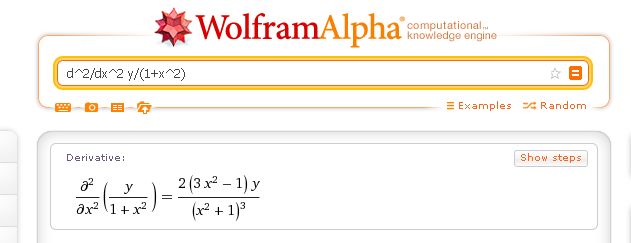Section 4.2 Higher Partial Derivatives
The partial derivatives of the function \(z=f(x,y)\) are themselves functions of two variables. Thus they can be differentiated further, giving the second partial derivatives, the third partial derivatives etc. Common notations for the second partial derivatives include:
Example 4.2.1.
Find the second partial derivatives for the function
\(f_{xx}(x,y) = -\sin(x) \cos(y)\text{,}\) \(f_{xy}(x,y) = -\cos(x) \sin(y)\text{,}\) \(f_{yx}(x,y) = -\cos(x) \sin(y)\) and \(f_{yy}(x,y) = -\sin(x) \cos(y).\)
Begin by finding the first partial derivatives. Here
Now differentiate \(f_x(x,y)\) firstly with respect to \(x\) to find \(f_{xx}(x,y)\) and then with respect to \(y\) to find \(f_{xy}(x,y)\text{.}\) Thus,
Next differentiate \(f_y(x,y)\) with respect to \(x\) to find \(f_{yx}(x,y)\) and then with respect to \(y\) to find \(f_{yy}(x,y)\text{.}\) Thus,
Notice that for this function \(f_{xy}(x,y) = f_{yx}(x,y)\text{.}\)
Example 4.2.2.
Calculate \(g_{xxy}\text{,}\) \(g_{xyx}\) and \(g_{yxx}\) when \(g(x)=xy^2 + \dfrac{y}{x^2}\text{.}\)
\(g_{xxy} = 6x^{-4}\text{,}\) \(g_{xyx} = 6x^{-4}\) and \(g_{yxx} = 6x^{-4}\text{.}\)
Begin by writing the function in the form
Then the first partial derivatives are
and hence the second partial derivatives are
Differentiating \(g_{xx}\) with respect to \(y\text{,}\) \(g_{xy}\) with respect to \(x\) and \(g_{yx}\) with respect to \(x\) gives
The above instances have provided examples of the following general result.
Theorem 4.2.3. Clairaut's Theorem.
If for the function \(f(x,y)\) both \(f_{xy}\) and \(f_{yx}\) are continuous on some domain \(D\text{,}\) then on that domain
Clairaut's Theorem can be extended to higher partial derivatives and to functions of more than two variables.
Example 4.2.4.
Calculate all first and second order partial derivatives for the function
Even though \(g\) is a function of \(3\) variables, Clairaut's Theorem still holds. Thus there will be only 6 distinct second partial derivatives, i.e. \(g_{xx}\text{,}\) \(g_{xy}\text{,}\) \(g_{xz}\text{,}\) \(g_{yy}\text{,}\) \(g_{yz}\text{,}\) \(g_{zz}\text{.}\)
Now
and so
Exercises Example Tasks
1.
Find the second partial derivatives for the function \(z=xye^y\text{.}\)
2.
Calculate \(g_{xx},\,\) \(g_{xy}\) and \(g_{xyy}\) for \(g(x,y) = \dfrac{y}{1+x^2}\text{.}\)
3.
Let \(u(x,t) = e^{-t} \sin \left(\dfrac{x}{c}\right)\) where \(c\) is a constant and \(c>0\text{.}\) Determine if \(u\) satisfies
Remark 4.2.5. A little remark.
Computer algebra systems can find partial derivatives. For example, here are some examples of a queries to Wolfram Alpha that will work.


